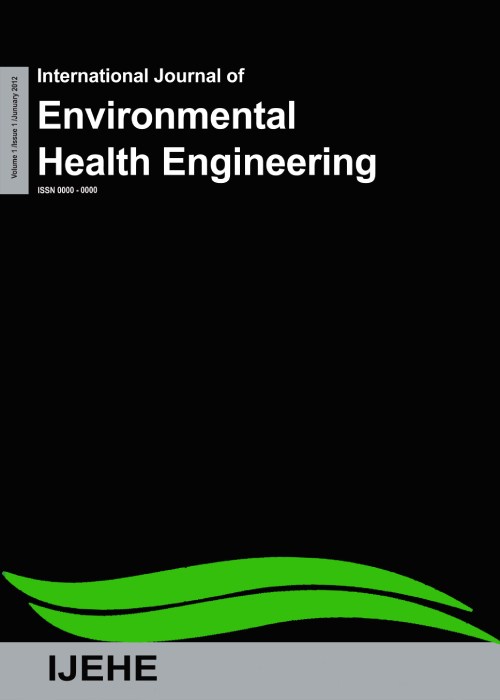فهرست مطالب
International Journal of Environmental Health Engineering
Volume:10 Issue: 2, Aug 2021
- تاریخ انتشار: 1400/05/10
- تعداد عناوین: 2
-
-
Page 1Aim
Estrogenic compounds as a group of endocrine disruptive compounds can interfere with endocrine system beings. In the present work, an attempt has been made, to characterize the kinetic coefficients of natural and synthetic estrogens, in a pilot-scale moving bed biofilm bioreactor (MBBR).
Materials and MethodsThe substrate removal rates were investigated at different organic loading rates, and hydraulic retention times. By applying some biokinetic models including first order, second order, Stover–Kincannon, and the Monod equation, the kinetic constants (m, Ks, k, Y, and Kd) were determined.
ResultsEstrogen-specific removal rate was between 0.22 and 1.45 μg. g VSS-1.d-1 for natural and synthetic hormones. The experimental data showed that the Stover–Kincannon model and second-order model were the fit models and have high correlation coefficients more than 99%.
ConclusionThese findings indicated that theses mathematical models could be promising models for effectively predicting kinetic parameters for performance of MBBR reactors.
Keywords: Estrogens, kinetic constants, mathematical models -
Page 2Aim
Although vermicomposting is rich in nutrients, the virulent microbes and pathogens present in it may be a threat to human health and the environment. Therefore, the objective of this study is to investigate the microbial quality of produced vermicompost, including fecal coliform and parasitic eggs, at a pilot scale, and compare it to present standards.
Materials and MethodsThree various reactors containing decomposable domestic waste (T1), cow manure (T2), and dewatered sludge (T3) were used to produce vermicompost using Eisenia fetida. According to the standard methods, fecal coliforms, parasitic eggs, and some of the treatment characteristics including organic carbons, nitrogen, temperature, humidity, pH, electrical conductivity and metals were evaluated during the 56-day operation period.
ResultsAccording to the results, the number of fecal coliforms in treatments of T1, T2 and T3 reduced from 2.5 × 104, 6 × 105 and 15 × 106 to 1000, 1500 and 1500 MPN/g dw, respectively. All parasite eggs reached zero after the 3rd week. At the end of the study, the average of organic carbon in T1, T2, and T3 were 35.4 ± 6%, 50.7 ± 5%, and 58.4 ± 7%, respectively. This value for total nitrogen were 0.9 ± 0.2%, 1.8 ± 0.7%, and 4.2 ± 1.2%, respectively.
ConclusionResults showed that the worm E. fetida has a great ability to reduce pathogens without the need for an increase in temperature. Furthermore, it can be concluded that vermicompost can improve the quality of compost in 8 weeks. The vermicomposting process can also greatly destroy the fecal coliforms and all parasite eggs.
Keywords: COMPOSTING, Eisenia fetida, manure, parasites, Solid waste


